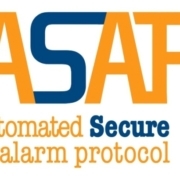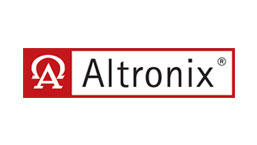ASAP® Network Widens with Addition of CMS
Implementation of the “Automated Secure Alarm Protocol” is Building Nationwide
VIENNA, VA (November 3, 2015) — Criticom Monitoring Services (CMS), one of the largest wholesale alarm monitoring companies in the United States, went live with ASAP® in the city of Richmond, VA on October 21. “Awareness of ASAP’s very real benefits to PSAPs is spreading,” said Jay Hauhn, executive director of CSAA. “The program gathers momentum with each prestigious national monitoring company that comes on board. Having CMS go live is a big step in the process of implementing this service around the nation.”
“CMS is now live with its ASAP-to-PSAP adoption,” commented Tony Wilson, President, CMS. “Our hope is that the ASAP program will increase the speed and accuracy of our dispatches.” CMS serves more than 3,500 alarm companies and their 800,000 customers. Their broad range of monitoring services includes response to security, fire, Personal Emergency Response Systems (PERS), environmental and interactive services such as two-way voice and remote video.
“It took about a year to launch the ASAP program,” continued Wilson. “We did this intentionally so that we could minimize the impact to our dealers. ASAP-to-PSAP is currently implemented for our 21 dealers located in the city of Richmond, VA; this affects approximately 500 subscriber accounts. Our Richmond contact, Bill Hobgood, was an excellent resource and helped to make this project easier. Our operators are excited for this new technology to communicate dispatches electronically and can’t wait for more and more PSAPs to follow suit. Over the next few weeks we will begin working on expanding our ASAP implementation to include our dealers located in Henrico County, VA and Washington, DC.”
ASAP was launched in 2011 as a public-private partnership, designed to increase the efficiency and reliability of emergency electronic signals from central station alarm companies to Public Safety Answering Points (PSAPs). ASAP utilizes ANSI standard protocols developed cooperatively by the Association of Public Communications Officials (APCO) and the Central Station Alarm Association (CSAA).
With ASAP, critical life safety signals and accurate information is processed more quickly, through the Nlets system of state-to-state PSAP communication, insuring that complete and accurate information is transmitted to the PSAP every time. The ASAP program has the potential to save PSAPs and emergency services millions of dollars.
Bill Hobgood, Project Manager, Public Safety Team Department of Information Technology City of Richmond, Virginia, has noted that “The percentage of alarm notifications transmitted to Richmond using the ASAP service has increased exponentially with the addition of each new central station to the ASAP program. In contrast, the Richmond Emergency Communications staff are receiving fewer telephone calls from central stations, which is one of the ASAP goals.”
For more information on ASAP or to access ASAP resources (videos, webinars, training and outreach materials), contact CSAA at asap@csaaintl.org or 703-242-4670, or visit csaaintl.org/asap.
About CSAA International
The Central Station Alarm Association International (CSAA) is an internationally-recognized non-profit trade association that represents professional monitoring companies that are listed by a CSAA-approved Nationally Recognized Testing Laboratory, such as FM Approvals, Intertek/ETL or UL. CSAA is legally entitled to represent its members before Congress and regulatory agencies on the local, state and federal levels, and other authorities having jurisdiction (AHJs) over the industry. Since its incorporation in 1950, CSAA has served its members’ interests through education, online training, meetings and conventions, certification, insurance, and industry standards. www.csaaintl.org. For more information, contact Elizabeth Lasko at CSAA, 703-242-4670 x 16.











